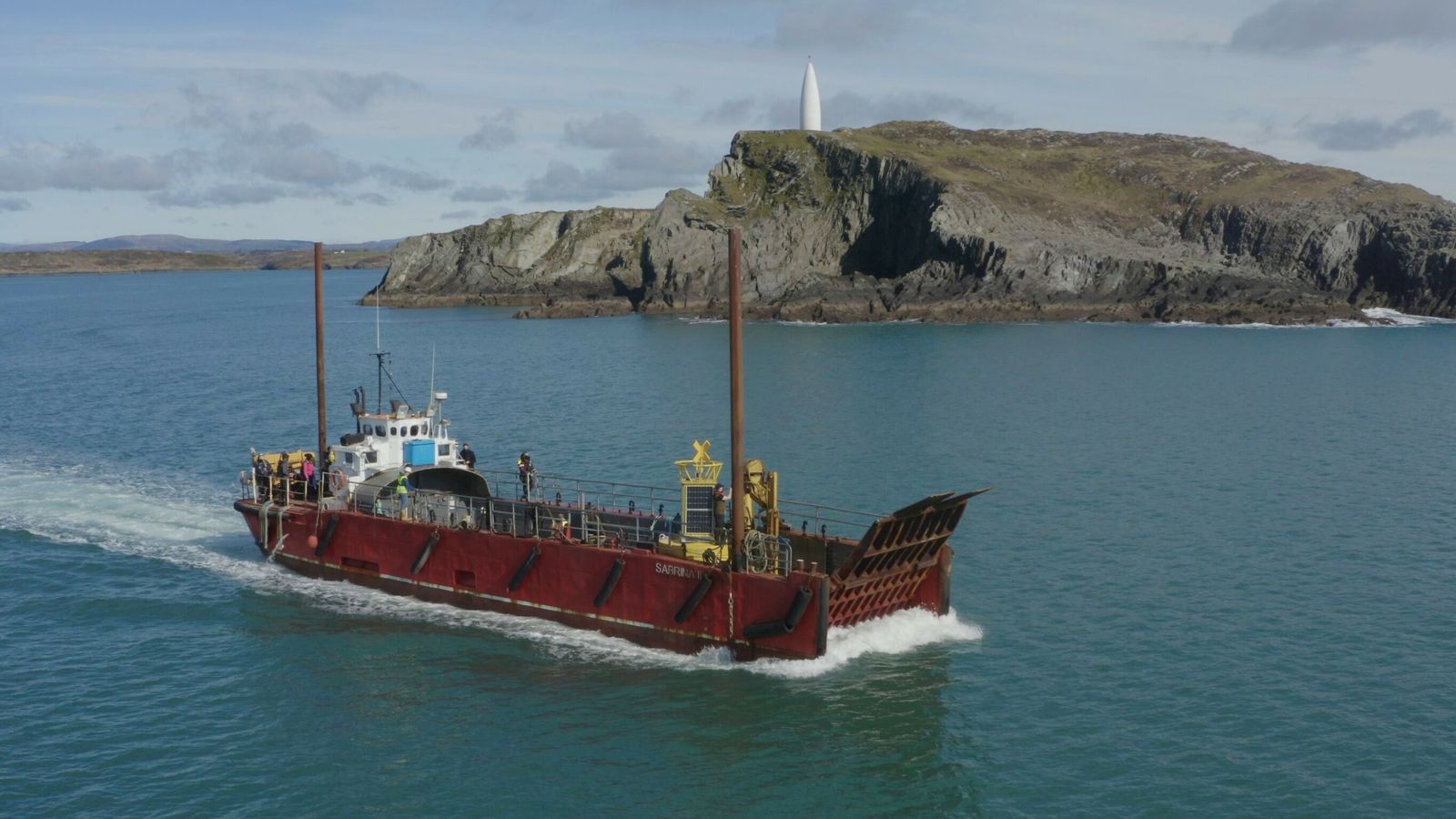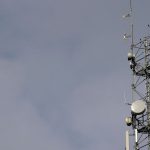Marine researchers have launched new acoustic equipment off the south coast of Ireland in a bid to prevent whales being struck by large vessels.
Ship strikes are considered a significant threat to whale populations, and are largely underreported.
The non-profit Ocean Research & Conservation Association Ireland (ORCA Ireland) group deployed a specially designed buoy from a barge about 5.5 miles (9km) from Baltimore, Co Cork – not far a busy shipping lane.
Its hydrophone will listen to the calls of different species, sending back data on location in real time.
With the aid of artificial intelligence learning models, researchers hope that the Automated Cetacean Acoustics Project (ACAP) can eventually lead to an early warning system to help ships avoid hitting whales, as well as gather data on the impact of sound pollution.
Speaking to Sky News on board the barge, marine mammal ecologist Emer Keaveney, co-founder of ORCA Ireland, said: “We know very little about the rate of ship strike in Irish waters and how often whales are hit by ships, but we also know very little about how loud our ships are.
“So something that’s going to be very interesting will be getting that information and seeing what happens when a ship passes the area when we have whales at the same time.”
Data from the buoy will be used to train machine learning models to recognise individual species and locations.
Ms Keaveney said the technology has huge potential to create real-time monitoring – and in the US, where ship strikes are a “huge issue”, an alert system now delivers notifications to mariners’ phones.
She added: “ORCA Ireland has had an observers’ app since 2017 and what we hope to do is integrate our acoustic detections and real-time information coming through into the app and then that can notify mariners when there’s potentially a whale in the area.
“They can reduce their speed and that will limit the impact of noise pollution but it will also reduce the risk of ship strikes.”
The waters off Ireland’s south coast, fed by the nutrient-rich Gulf Stream current, are noted for an abundance of whales, dolphins and porpoises. About 25 resident and migratory species can be found here, including fin whales – the second-largest mammal on Earth – and humpback whales in the summer months.
Nearby is a shipping lane used by thousands of vessels annually, travelling between North America and Europe, making the area a perfect location for the monitoring equipment. ORCA Ireland does not receive any state funding, and launched ACAP with support from the Rainforest Connection and the Chinese communications firm Huawei.
Local whale-watching skipper Kieran Collins hopes that the new technology will also raise public awareness of the region’s delicate marine ecosystem.
He said: “What’s really important is to be aware that what we do affects the animals, it’s to make the general public aware that these animals are out there and also to respect them when we do go out there and not to disturb them, not to upset them.
“For me this is one of the good news stories in the midst of a pandemic when everything seems to be negative. Good news for the whales, good news for the wildlife.”






















